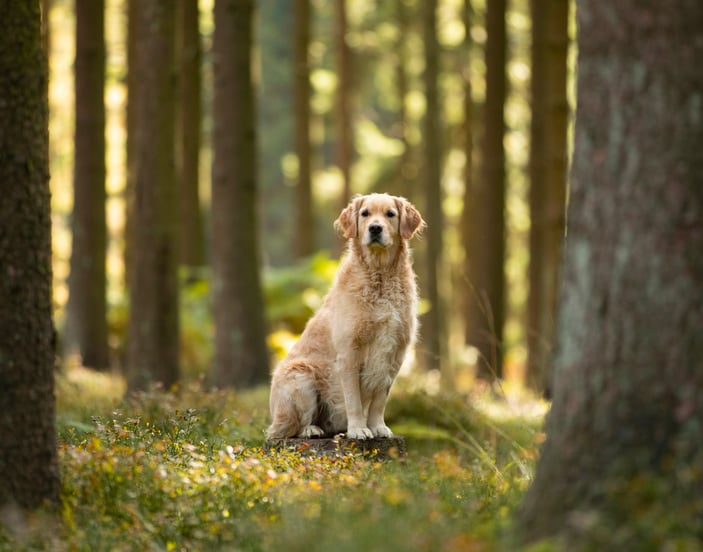The guide to owning a Golden Retriever.
Want to know everything there is to know about finding the right dog for you? Submit your email below, and we’ll send you a one-stop guide to help you on your pet-ownership journey.
Jump to:
Stats at a glance.
History of the Golden Retriever.
This breed was developed in the Scottish Highlands by Lord Tweedmouth, who aimed to create a “perfect” gun dog.
By crossing breeds like the Tweed Water Spaniel (now extinct), Flat-Coated Retriever, and other sporting dogs, he ended up with the good-natured, water-loving Golden Retriever.
Later, sportsmen and families in both Britain and North America noted how obedient, friendly, and easy to train the Golden Retriever dog breed is.
So, in the late 19th century, various kennel clubs—including the Kennel Club in the UK and the American Kennel Club (AKC) in the US—recognised them as a distinct variety.
Over time, Golden Retrievers may be found doing everything from being guide dogs to skilled search-and-rescue partners.
If you want to see how they might compare with another affectionate breed, you might look at our piece on Golden Retriever vs Labrador Retriever.


How much is a Golden Retriever puppy (UK)?
Bringing home a Golden Retriever puppy is a delightful experience, yet it also involves an up-front cost.
In the UK, a well-bred pup can range from £1,000 to £2,500 or more, depending on breed standard, lineage, and the breeder’s reputation.
Keep in mind that if something seems suspiciously low, it might be. Always vet the Retriever puppy from a breeder who performs health tests or understands lineage for hip dysplasia, elbow dysplasia, and possible ichthyosis or health conditions that can crop up down the line.
If you’re budgeting for a new family member, you can find helpful tips in our budgeting for a Golden Retriever article.
Choosing a reputable breeder often involves:
Verifying health certificates.
Meeting the parent dogs, or at least viewing their medical records.
Requesting DNA test results, especially for ichthyosis.
Ensuring they show genuine care for placing pups in the right families.
Thinking about rescue? Many rescue dogs jump at the chance for a second life.
Local shelters or breed-specific groups (like a Golden Retriever club rescue) can be wonderful places to find an adult dog who might already have basic training.
Colours and coat types.
Though famously “golden,” these Retrievers vary from pale cream to deep gold. Some might even sport an almost reddish hue.
All are recognised by the Kennel Club's standards, and each dog’s long coat is thick, with a dense double coat that helps protect them while retrieving in water or rugged fields. The top layer repels moisture, while the undercoat acts as insulation.
Because their coat is quite lush, they do shed a lot—especially in spring and autumn.





Size and weight.
A Golden Retriever adult is a medium- to large-size breed, typically measuring 51–56cm for females and 56–61cm for males at the shoulder.
Weights hover around 25–34 kg, but note each individual dog is unique. Keeping them in a healthy body condition is important to avoid placing extra strain on hips and elbows. Regular weigh-ins at the vet help track progress.
If you’re new to large canines, check out our big dog breeds resource to understand some differences in the breeds.


Temperament and behaviour.
Temperament
Golden Retrievers make some of the best family pets around. They’re generally gentle, warm, and enthusiastic about play. Often, they’ll nudge your hand for a bit more playtime, or happily lounge with you on the sofa.
Because Retrievers are known for their eagerness to please, many find them easy to train relative to more stubborn breeds.
Do Golden Retrievers make good pets?
Yes, very much so. They’re social dogs who can adapt to bustling households with children or more laid-back homes with retirees.
Due to their gundog origins, they love mental challenges—think hide-and-seek with a favourite toy or calm fetch sessions. Without enough stimulation, they might become bored or chew on items you’d rather keep intact.
If you want to compare your potential golden with other top pups, see our guide to the best dog breeds first time owners. It’s a good read for novices.
Are Golden Retrievers good with kids?
Absolutely. They’re typically friendly, patient, and tolerant. Of course, we always promote adult supervision, especially if younger children don’t yet know how to respect a dog’s space.
Teaching kids to handle a Golden gently helps everyone remain happy and safe.
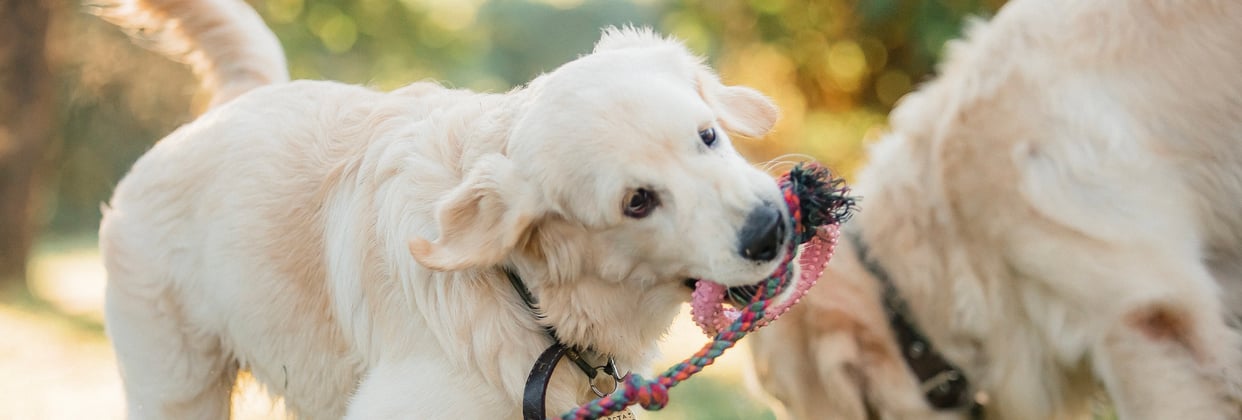

Are Golden Retrievers good with cats?
Many Goldens get along well with cats, provided there’s proper socialisation. Their sweet demeanour usually keeps them from chasing the cat around, but each dog is different. Early introductions and positive interactions will help ensure a peaceful multi-pet home.
Behaviour
Golden Retrievers love being active—walks, swims, or a game of tug. Usually, they’re sociable enough to greet strangers with wagging tails. But if left alone too long, they can suffer separation anxiety, leading to destructive habits like chewing or digging. We have a separation anxiety guide for further insights.
Do Golden Retrievers bark a lot?
Golden Retrievers aren’t typically the neighbourhood noisemakers—but that doesn’t mean they’re silent either.
They tend to bark when there’s something worth mentioning, like a visitor at the door or when they’re feeling playful and want your attention.
It’s usually more of a friendly “hello” than a non-stop barking session. That said, if they’re left alone too long or feeling bored, even the calmest Golden might find their voice.
Keeping them busy with walks, playtime, and a bit of training usually keeps the peace.
Are Golden Retrievers good apartment dogs?
They can be, but it really depends on your lifestyle. Golden Retrievers are big, friendly family dogs who love being part of the family, whether that’s in a house or a flat.
The catch? They’re active by nature and need regular exercise to burn off their energy. A cramped space without daily walks or mental stimulation can leave them feeling restless—or worse, destructive.
But if you’re up for long walks, park trips, and plenty of company, a Golden Retriever can adapt surprisingly well to apartment life.
Training a Golden Retriever.
Are Golden Retrievers smart?
They are, indeed. This intelligence makes them wonderful guide dogs and therapy dogs. They pick up commands quickly if you use positive, reward-based methods.
They also love to play the “look-how-smart-I-am” game, so short, fun sessions work best. Keep training upbeat, toss them treats or a favourite squeaky toy, and watch them shine.
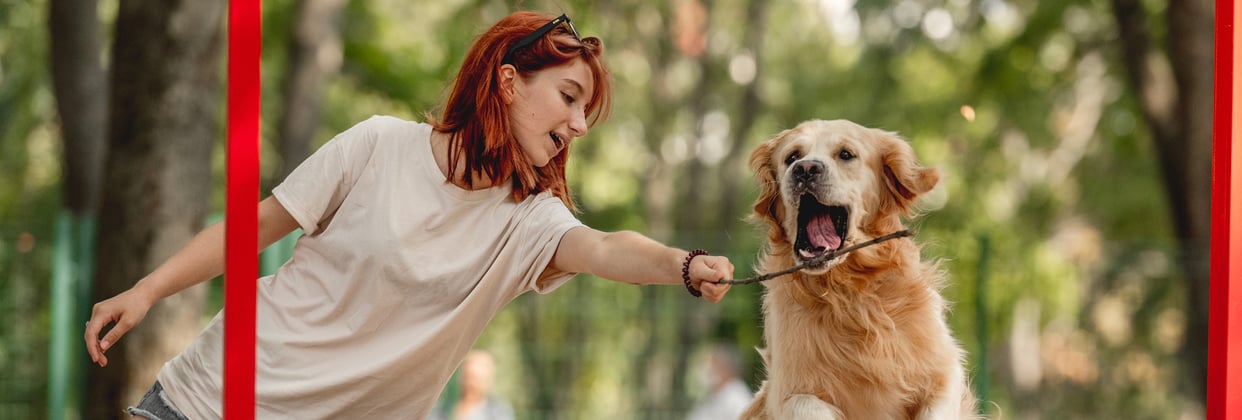

House training a Golden Retriever
Golden Retrievers are clever and eager to please, which makes house training a bit easier than with some other breeds—but don’t expect perfection overnight.
Puppies, like toddlers, need patience, consistency, and a whole lot of repetition. Start with regular toilet breaks—after meals, naps, and playtime—and reward every successful trip outside like they’ve just won an Oscar.
Accidents will happen (they always do), so keep your cool and clean up without a fuss. With gentle guidance, most Goldens pick it up quickly and love knowing they’ve done the right thing—especially if it earns them a treat or two.
Shedding and grooming.
Long coat upkeep
That long coat is gorgeous, but it does require attention. Golden Retrievers shed A LOT.
Plan on brushing at least two to three times a week, focusing on the feathering (ears, chest, legs, tail) to prevent tangles.
During seasonal shedding, more frequent brushing will help control fur tumbleweeds around your home.
Bathing is recommended every one to two months. Check out our article on how to bathe a dog for tips on making bath time less of a chore.
Also, don’t forget ear cleaning and nail trims—long nails can make simple walks uncomfortable.
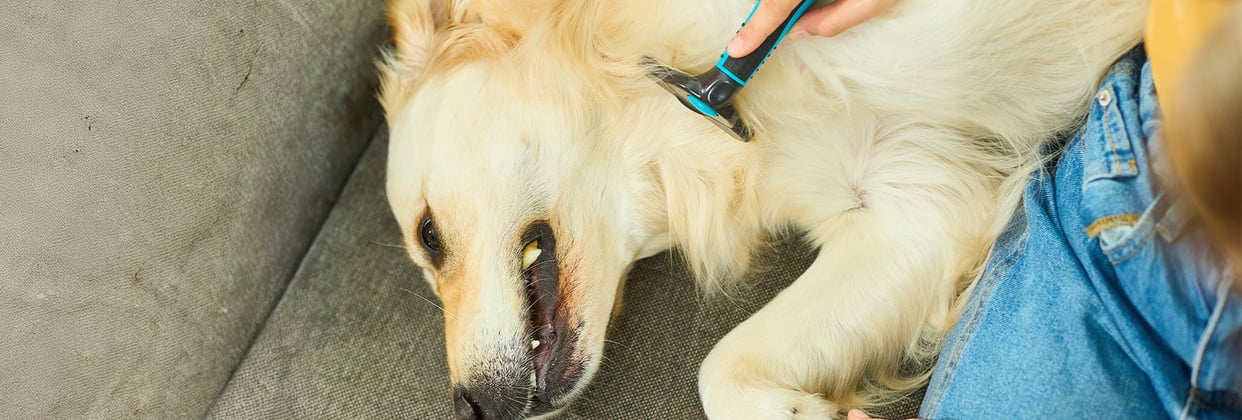

Exercise and mental stimulation.
Golden Retrievers are an active breed. Expect 60–90 minutes of daily exercise. Break it up with walks, short runs, or time at the park. They excel in dog sports like agility, rally obedience, and even dock diving if you have easy water access.
For mental fun, puzzle toys or scent games are a hit. Let them use that excellent sense of smell to find hidden treats. If you’re seeking creative ways to encourage your dog mentally, swing by our "How To Make Your Dog Happy" feature.
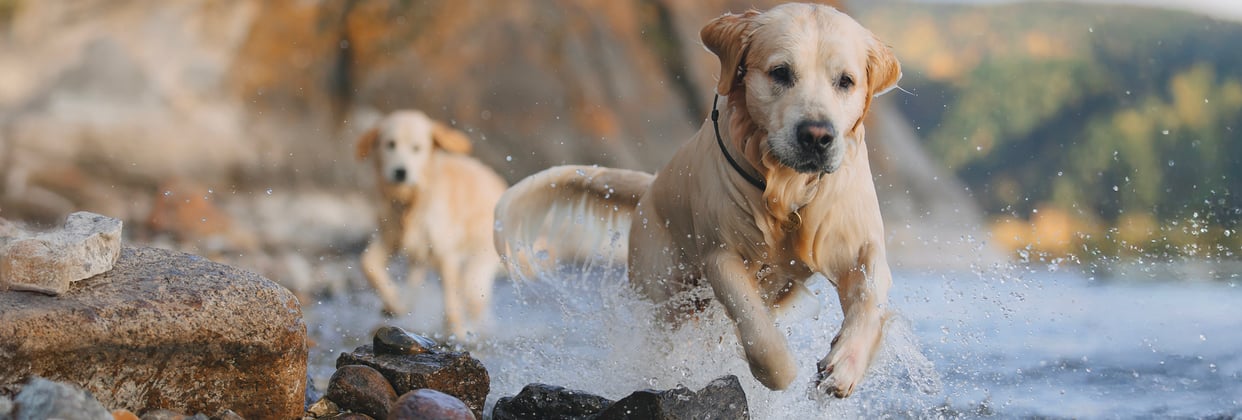

Feeding and nutrition.
Quality nutrition is crucial for Goldens, especially considering their predisposition to hip dysplasia and joint strain.
A complete and balanced diet with moderate protein can keep them healthy. Age, size, and activity level determine how much to feed your dog. As a general rule, adult Golden Retrievers might eat around 2.5–3.5 cups of kibble per day, split into two meals.
Fish oils or an omega-3 supplement (often fish oil) can support joint and dog’s skin health. For more feeding tips, see grain-free dog food guide if your vet recommends that route.
Common health issues in Golden Retrievers.
Frequent vet visits for check-ups and early screenings help detect issues before they escalate.
If you’re feeling cautious about costs, you’re not alone; comprehensive insurance can provide peace of mind.
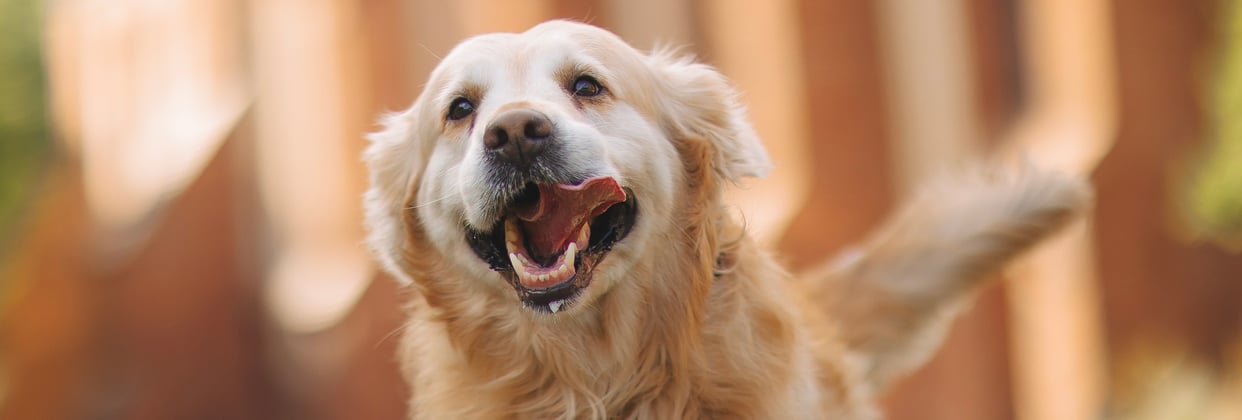

Pet insurance for Golden Retrievers.
Given potential health risks like hip dysplasia, hemangiosarcoma, or ichthyosis, having coverage is a lifesaver.
Golden Retrievers are a bigger breed, so surgeries, medications, or long-term therapies can be pricey.
You can explore our dedicated Golden Retriever Pet Insurance options to keep unexpected vet bills manageable.
At Waggel, we aim to make the health and welfare of your Golden a top priority. Our plans offer:
Lifetime cover for chronic conditions
24/7 vet triage via Joii
Tools and advice for managing weight, joint care, and more
Rewards and perks for you and your pet
Get your free quote and join our community of supportive owners who want the best for their furry friends.
